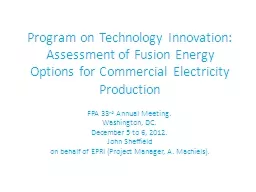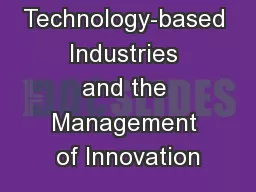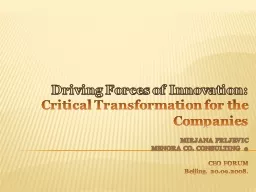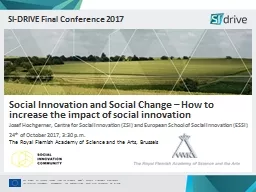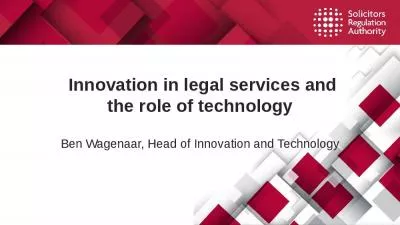PPT-Program on Technology Innovation:
Author : test | Published Date : 2016-04-25
Assessment of Fusion Energy Options for Commercial Electricity Production FPA 33 rd Annual Meeting Washington DC December 5 to 6 2012 John Sheffield on behalf
Presentation Embed Code
Download Presentation
Download Presentation The PPT/PDF document "Program on Technology Innovation:" is the property of its rightful owner. Permission is granted to download and print the materials on this website for personal, non-commercial use only, and to display it on your personal computer provided you do not modify the materials and that you retain all copyright notices contained in the materials. By downloading content from our website, you accept the terms of this agreement.
Program on Technology Innovation:: Transcript
Download Rules Of Document
"Program on Technology Innovation:"The content belongs to its owner. You may download and print it for personal use, without modification, and keep all copyright notices. By downloading, you agree to these terms.
Related Documents

